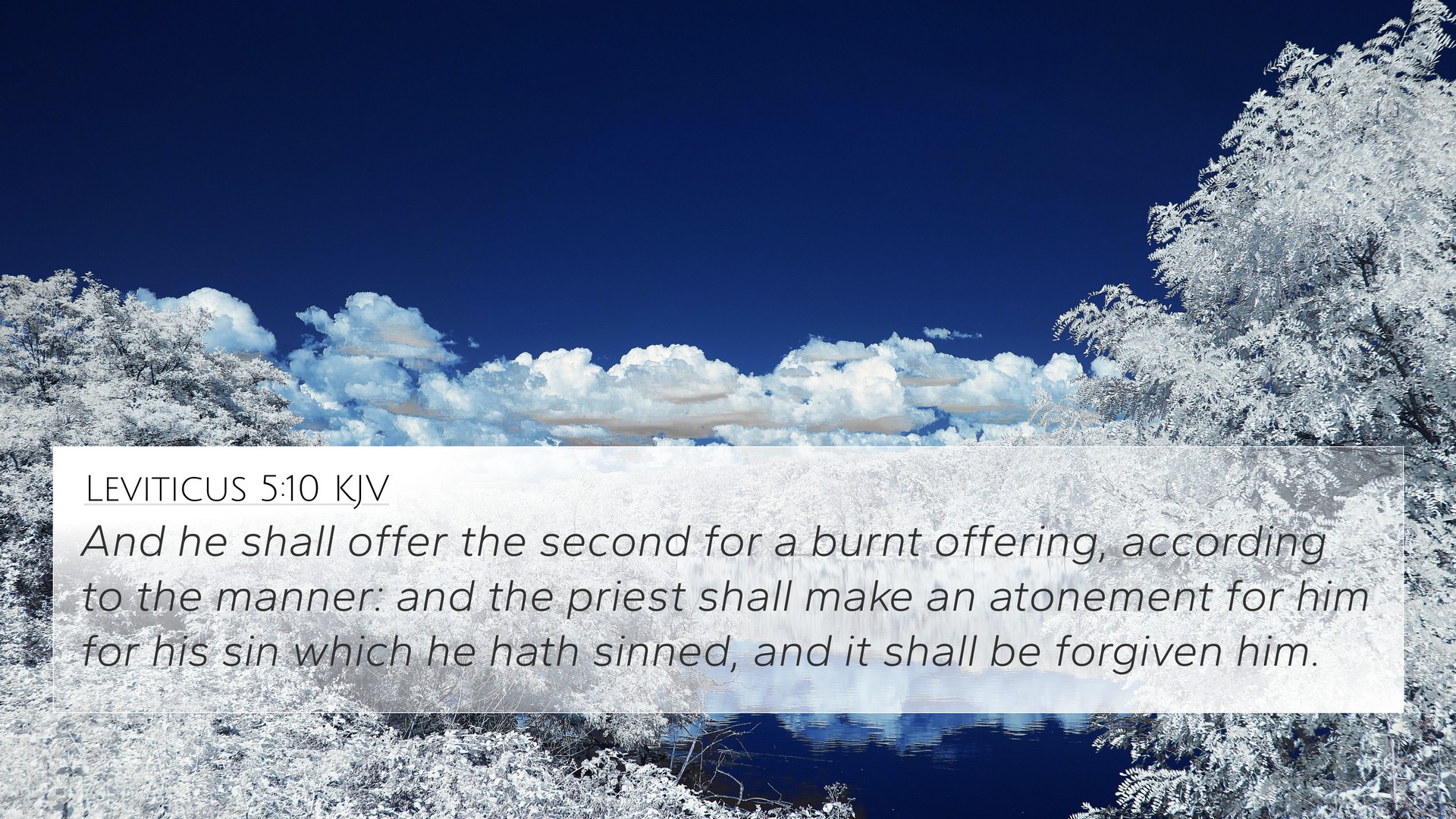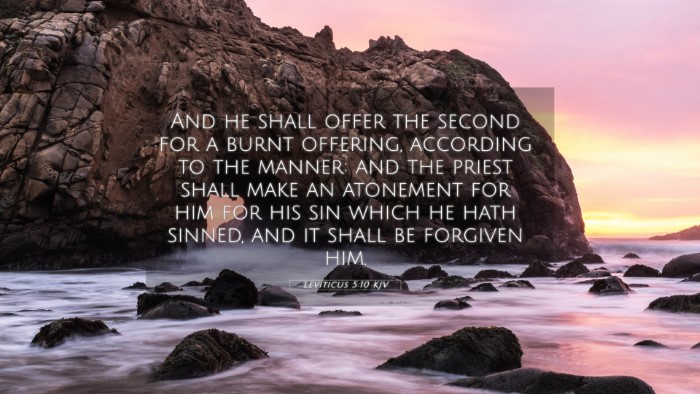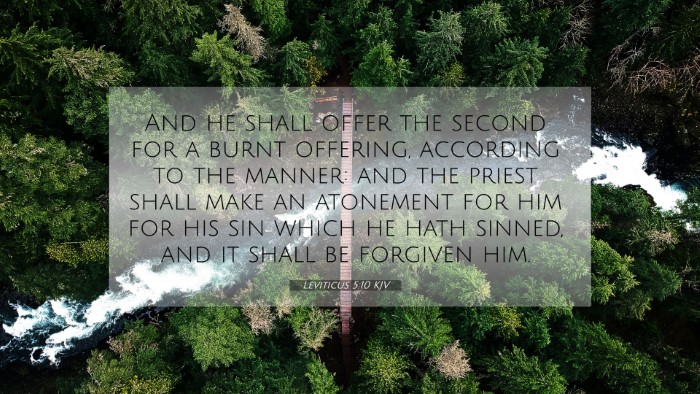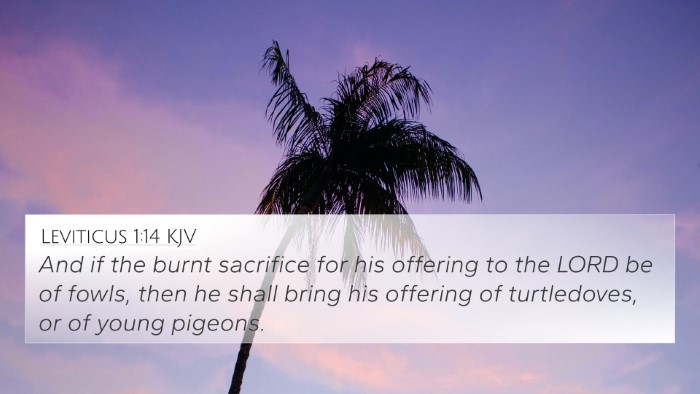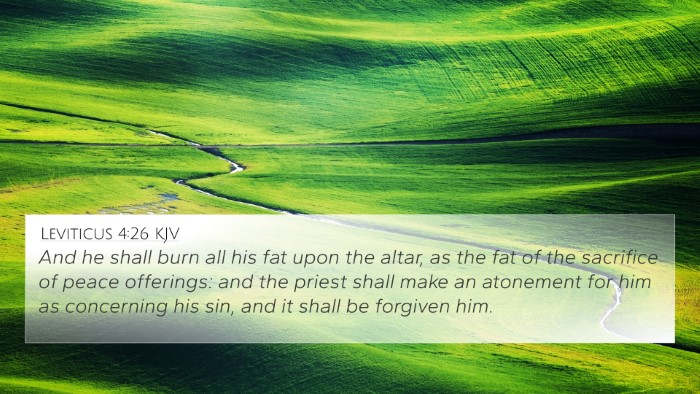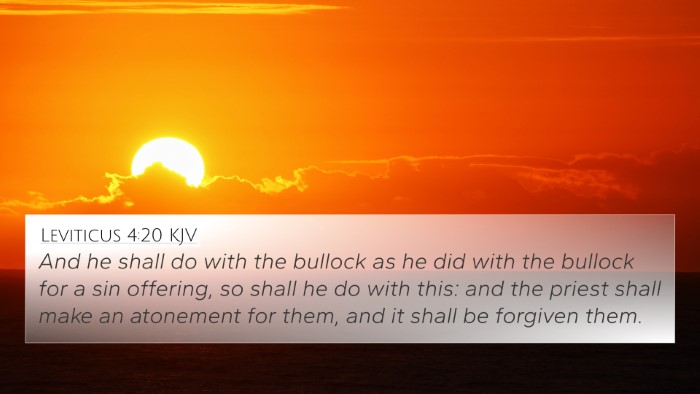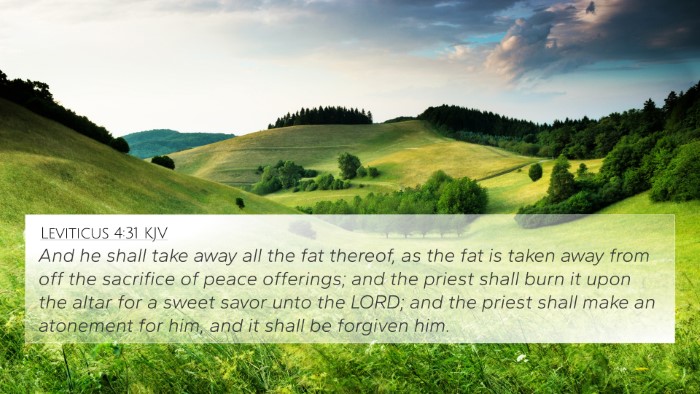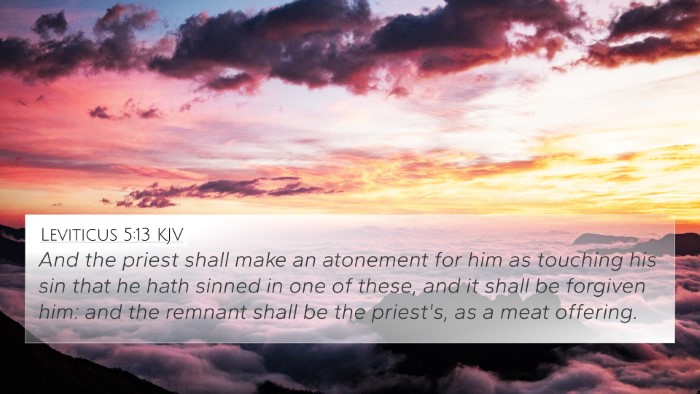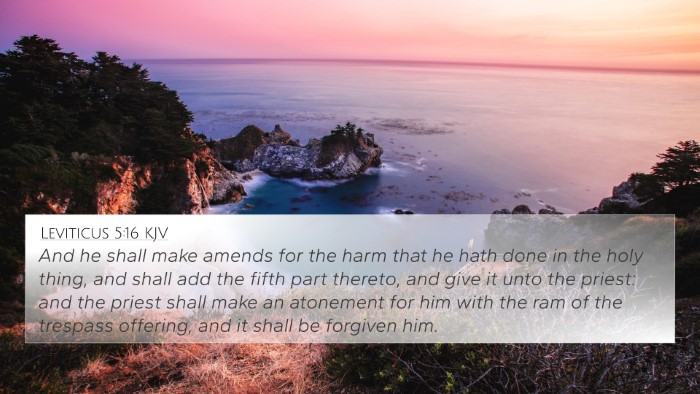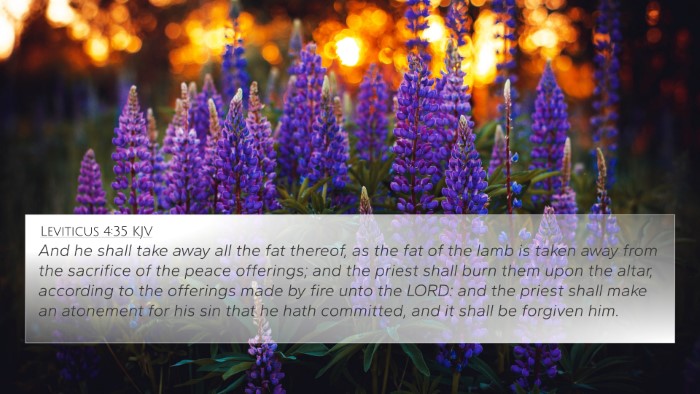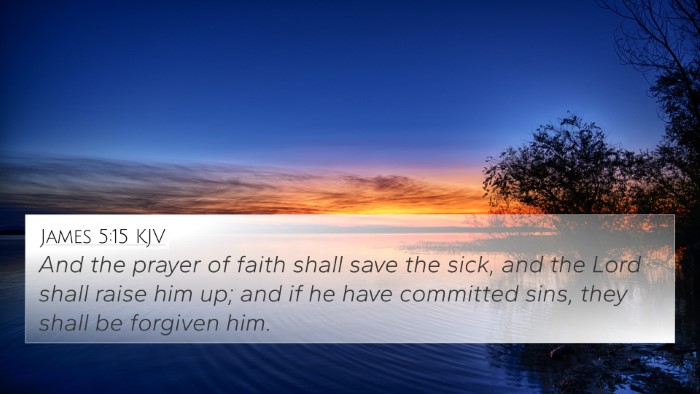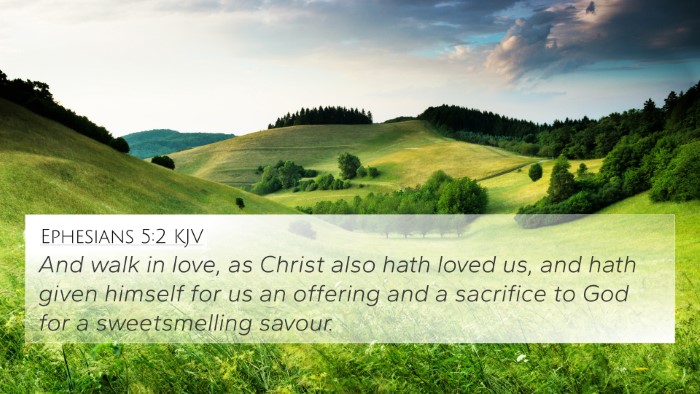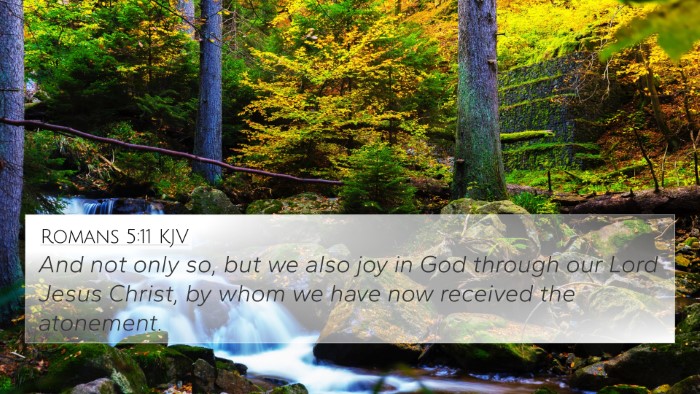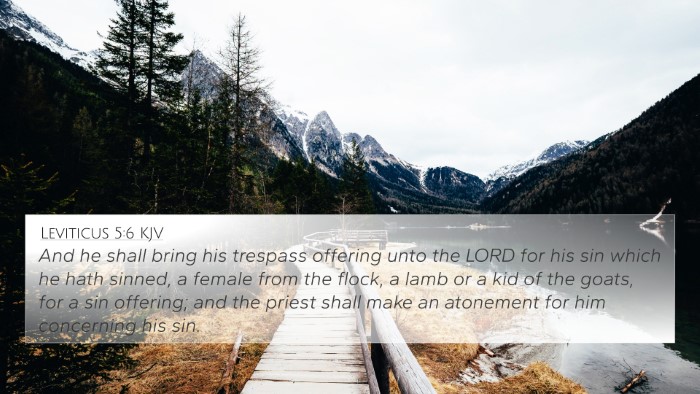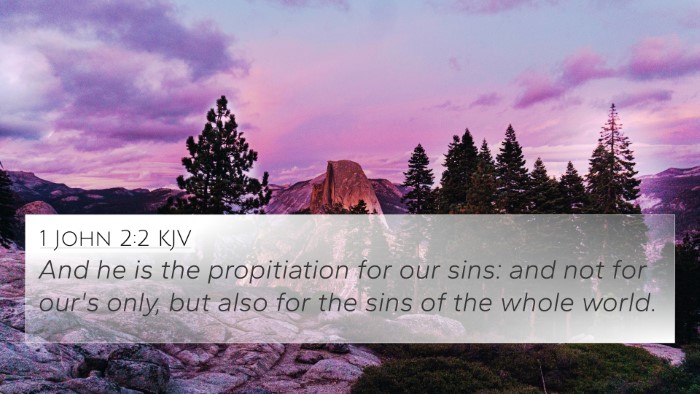Understanding Leviticus 5:10
Leviticus 5:10 states: “And he shall offer the second for a burnt offering, according to the manner: and the priest shall make an atonement for him for his sin which he hath sinned: and it shall be forgiven him.” This verse falls within the broader context of offerings and atonement established in the Mosaic Law, highlighting both the ritual and the importance of sincere repentance.
Summary of Insights from Public Domain Commentaries
This verse is significant in its implications for atonement and forgiveness. Each of the commentaries provides a unique perspective that enhances our understanding:
-
Matthew Henry:
Henry emphasizes the seriousness of sin and the necessity of atonement. He explains that this verse illustrates God’s provision for forgiveness, reflecting His mercy and justice. The burnt offering signifies complete dedication to God, signifying repentance and consecration.
-
Albert Barnes:
Barnes notes the procedural aspects of the burnt offering (olah), indicating that it should be done according to divine instructions. He elucidates that the offering is an essential step towards restoration and that the priest acts as an intermediary in the sacrificial system.
-
Adam Clarke:
Clarke provides a theological interpretation, linking this practice to the New Testament concept of Christ as the ultimate atonement for sin. He comments on the significance of acknowledging sin and the role of the priest in offering sacrifices consistently throughout the covenant community.
Bible Verse Cross-References
Several verses connect thematically and contextually with Leviticus 5:10:
- Hebrews 10:18: This emphasizes that where there is forgiveness, there is no longer a need for offerings.
- 1 John 1:9: Discusses confession and the assurance of forgiveness, aligning with the atonement theme.
- Leviticus 4:35: Relates to sin offerings and how they are vital for atonement.
- Numbers 15:26: Highlights the collective forgiveness of sin in the community, reinforcing the need for atonement.
- Isaiah 53:5: Foreshadows the suffering servant, drawing connections to Christ’s role in atoning for sin.
- Romans 3:25: Discusses Christ being a propitiation through faith in His blood, symbolizing the ultimate atonement.
- Romans 6:23: Contrasts the wages of sin with the gift of God, underscoring the importance of understanding atonement in salvation.
- Psalm 32:5: Talks about confession leading to forgiveness, aligning with the theme of acknowledgement of sin prior to offering.
- Matthew 5:23-24: Jesus urges reconciliation and highlights the importance of addressing sin directly.
- 2 Corinthians 5:21: References Christ taking on our sin so that we might become righteous, connecting the sacrificial system of the Old Testament with New Testament theology.
Thematic Connections and Analysis
The offerings outlined in Leviticus, including the burnt offerings, form a framework for understanding biblical atonement. They connect with diverse themes found throughout both the Old and New Testaments. Here are thematic links:
- Repentance and Forgiveness: These offerings underscore the need for a repentant heart, evidenced through the process of sacrifice.
- The Role of the Priest: The intermediary role played by priests in the Hebrew Bible prefigures Christ’s ultimate work as our High Priest.
- God’s Mercy: The provision of offerings reflects God's desire for reconciliation with His people.
- Teleological Aspects of Sacrifice: Each offering points towards a redemptive purpose fulfilled in the life and sacrifice of Christ.
Cross-Referencing Methods
To better understand Leviticus 5:10, one can utilize various tools for Bible cross-referencing:
- Employ a Bible concordance to locate related verses that mention similar themes or keywords.
- Utilize a cross-reference Bible study guide to explore interconnected scriptural themes.
- Incorporate a comprehensive Bible cross-reference materials to assess the broader context of atonement and sacrifice.
- Engage with cross-reference Bible study methods, enabling a detailed analysis of scriptural dialogues.
- Use Bible reference resources to strengthen the understanding of key theological concepts.
Conclusion
Leviticus 5:10 serves as a crucial link between the Old Testament sacrificial system and the New Testament understanding of atonement through Christ. By examining cross-references and utilizing diverse tools for analysis, believers gain rich insights into God's overarching narrative of grace and redemption.
In your journey through the scriptures, consider Leviticus 5:10 as not merely a historical ritual, but as a profound declaration of God's longing for relationship, restoration, and reconciliation through the lens of atonement that ultimately finds its fulfillment in Christ.
